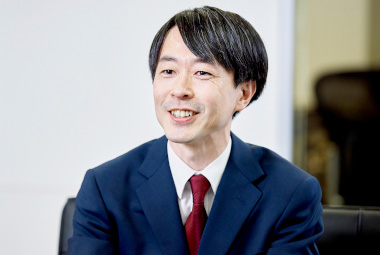
Hiroshi Abe
Qualification
Ph.D. (Engineering)
Practice Areas
Patent
Electrical Engineering, Electronics, Software
Education
Ph.D. in Engineering, Department of Human System Science, Graduate School of Decision Science and Technology, Tokyo Institute of Technology, Japan
M.S. in Engineering, Department of Human System Science, Graduate School of Decision Science and Technology, Tokyo Institute of Technology, Japan
B.S. in Engineering, Department of Electrical and Electronic Engineering, Tokyo Institute of Technology, Japan
Work Experience
Dr. Abe studied the neural mechanisms of decision-making and learning in the prefrontal cortex and visual/oculomotor circuits by combining physiological (unit recording and calcium imaging) and anatomical techniques at Yale University School of Medicine (USA), Rockefeller University (USA), National Center of Neurology and Psychiatry (Japan), and RIKEN (Japan).
Research Content
(1) Dr. Abe researched on the brain mechanisms of choice behaviors at the Department of Human System Science, Graduate School of Decision Science and Technology, Tokyo Institute of Technology, and RIKEN Brain Science Institute. By combining single-cell unit recording and a reinforcement learning framework, He showed that neuronal activity in the medial prefrontal cortex represents prediction errors in action value [1].
(2) At Yale University, he extended the same approach to model-based reinforcement learning. Human being sometimes regret by thinking of outcomes he might have obtained by chosing a different action, which affect his future behaviors. Dr. Abe found that unobtained outcomes from unchosen actions are represented by the activity of neurons in the dorsolateral prefrontal cortex and orbitofrontal cortex [2]. He also interpreted a book on intelligence and brain science related to this research into Japanese ("The Birth of Intelligence" by D. Lee, translated by H. Abe, published by Botakusha, 2022).
(3) At Rockefeller University, he researched on the plasticity of the cerebral cortex in adults. Long-term observation of neuronal activity using electrode arrays revealed that neuronal circuits are reconstructed in adults as a result of peripheral nerve damage [3].
(4) At the National Center of Neurology and Psychiatry and RIKEN Center for Brain Science, he researched to create a database of neural circuits in the cerebral cortex and on the brain mechanisms of vision and eye movements. By expressing fluorescent proteins in neurons using viral vectors and measuring neuronal morphology and activity with an epi-fluorescence microscopy and two-photon microscopy, he clarified the neural projection patterns of numerous brain regions and identified visual and eye movement-related regions in the parietal lobe ([4-5]).
[1] M. Matsumoto*, K. Matsumoto*, H. Abe*, and K Tanaka, "Medial prefrontal cell activity signaling prediction errors of action values", Nature Neuroscience, 10(5), 647-56, 2007 (*:co-first author).
[2] H. Abe and D. Lee, "Distributed Coding of Actual and Hypothetical Outcomes in the Orbital and Dorsolateral Prefrontal Cortex", Neuron, 70(4), 731-41, 2011.
[3] H. Abe, et al., "Adult Cortical Plasticity Studied with Chronically Implanted Electrode Arrays", Journal of Neuroscience, 35(6), 2778-90, 2015.
[4] H. Abe et al., "3D reconstruction of brain section images for creating axonal projection maps in marmosets", Journal of Neuroscience Methods, 286(1), 2017.
[5] H. Abe et al., "Axonal Projections From the Middle Temporal Area in the Common Marmoset", Frontiers in Neuroanatomy, 12:89, 2018.
